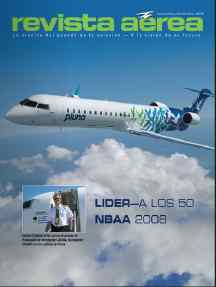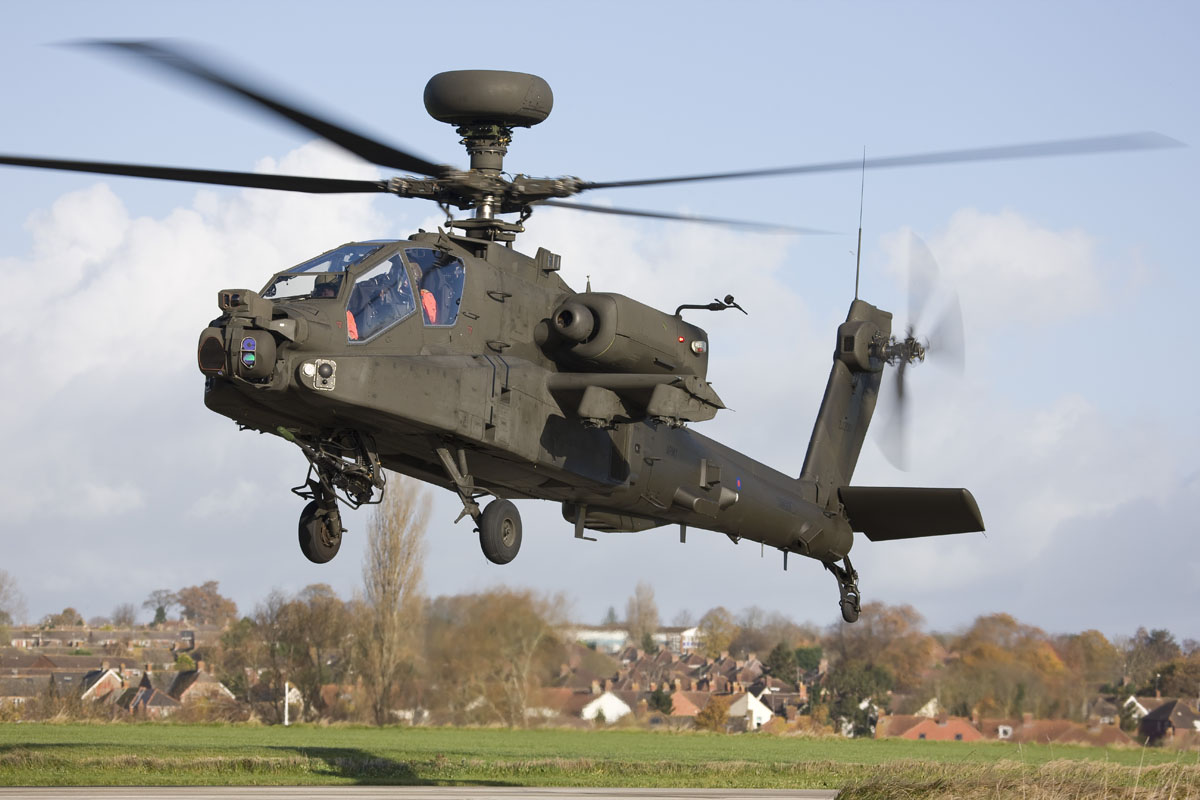Noviembre/Diciembre Issue
November 26, 2008
Goodrich to Supply Integrated Imaging Satellite for Operationally Responsive Space (ORS)
November 25, 2008
Contract awarded to produce first operational ORS system for the Department of Defense
Goodrich has partnered with ATK Space Systems, based in
Goodrich Corporation, a Fortune 500 company, is a global supplier of systems and services to aerospace, defense and homeland security markets. With one of the most strategically diversified portfolios of products in the industry, Goodrich serves a global customer base with significant worldwide manufacturing and service facilities.
Pratt & Whitney’s F135 Successfully Completes First Supersonic Flight
November 25, 2008
The F135 engine powered the F-35 Lightning II to supersonic speed while loaded with a full internal complement of inert weapons to simulate the engine’s supersonic capability while the aircraft was in a fully armed, stealth configuration.
“We are extremely pleased with the results of the successful first F135 supersonic flight,” said
During the test sequence, the F-35 completed four transitions through the sound barrier, spending a total of eight minutes in supersonic flight. Testing will continue with the eventual goal of reaching Mach 1.6 with a full weapons load.
This is one of many successes the F135 program has had this year, including powering the first STOVL aircraft flight in June, successfully completing of over 10,000 test hours, and completing assembly of 10 flight test engines.
“The F135 is the only fifth generation engine powering the F-35 Lightning II flight test program,” Gostic said. “With every successful test and with every milestone achieved, the F135 continues to prove its unmatched performance and capability to exceed our customers’ expectations.”
The F135 propulsion system is the power of choice for the F-35 and has proven it can meet diverse aircraft requirements. The ground and flight test experience demonstrates the maturity and the associated reliability of the F135 engine for armed forces around the world.
Pratt & Whitney is a world leader in the design, manufacture and service of aircraft engines, space propulsion systems and industrial gas turbines. United Technologies, based in
Pratt & Whitney Canada Certifies PW207D1 and PW207D2 Engines to Power Bell Helicopter 429
November 25, 2008
LONGUEUIL, QUEBEC–(Marketwire – Nov. 25, 2008) – Pratt & Whitney Canada (P&WC) has received Transport Canada type certification for its new PW207D1 and PW207D2 engines selected to power the Bell Helicopter 429. Pratt & Whitney Canada is a United Technologies (NYSE:UTX) company.
New additions to the PW200 family, the PW207D1 and PW207D2 engines are marketed by P&WC Turbo Engines Corp. (P&WCTEC), a subsidiary of P&WC.
“We are very proud to be leveraging the extraordinary experience of our PW200 engine family with the latest proven technology to offer Bell Helicopter unprecedented levels of reliability and economy in these new engine models,” says Keyvan Fard, Senior Vice President – Sales and Marketing of P&WC and member of the P&WCTEC board of directors.
Today, more than 800 PW200-powered helicopters are in operation in 56 countries, having accumulated over 2.8 million hours of operating time. Key operating segments include law enforcement, emergency medical services and corporate markets.
The PW200 family of engines is a leader in light twin engine sales and is the industry’s benchmark for dependability, dispatch reliability, operating economics and easy maintenance.
P&WC’s family of helicopter engines in the 500 – 2,000 shaft horsepower class has lifted the company to a leading position in the industry. P&WC helicopter engines are backed by a world-wide Customer Service organization ranked first in the industry for nine years in a row, according to Professional Pilot Magazine’s 2008 Powerplant Product Support Survey.
Pratt & Whitney Canada, based in Longueuil, Quebec, is a world leader in the design, manufacture and service of aircraft engines powering business, general aviation and regional aircraft and helicopters. The company also manufactures auxiliary power units and industrial gas turbines. United Technologies, based in Hartford, Conn., USA, is a diversified company providing high technology products and services to the global aerospace and building industries.
Fast-Growing CF34 Fleet Surpasses 50 Million Flight-Hours Powering Regional Jets
November 24, 2008
A Milestone That Speaks Volumes
GE’s Fast-Growing CF34 Fleet Surpasses 50 Million Flight-Hours
Powering Regional Jets
EVENDALE, OHIO – November -24, 2008 – In just 16 years, GE Aviation’s
CF34 engines for regional jets have surpassed 50 million hours – a
figure reflecting the growing significance to GE of this relatively
new commercial aviation segment.
GE helped to usher in the era of modern regional-jet travel in 1992,
when the first CF34-powered Bombardier CRJ100 entered revenue service.
Today, more than 4,200 CF34 engines power 50- to 120-seat aircraft
models produced by Bombardier of Canada and EMBRAER of Brazil.
Also, the CF34 will power the new ARJ21 regional jets from Commercial
Aircraft Corporation of China (COMAC). The ARJ21-700 is scheduled to
begin flight-testing later this year. COMAC has already received 206
aircraft orders.
By 2018, GE CF34 engines for regional jets are expected to surpass
8,600 engines – and accumulate more than 200 million flight-hours.
(Adding CF34 engines powering Bombardier Challenger business jets, the
total CF34 fleet for regional and business jets is expected to reach
11,000 by 2018.)
Already, the CF34 fleet makes a significant contribution to overall
revenue, with the CF34 for regional jets contributing in 2007 more
than $1.5 billion to the GE Aviation revenue base.
It is an impressive return on a considerable long-term investment by
GE into the regional jet market. Since 1992, GE has invested more
than $2 billion to develop the CF34-3 engine for 50-passenger
aircraft, and the CF34-8 and CF34-10 engine families for the 70- to
120-seat aircraft.
The investment has resulted in a CF34 engine family counted among the
most reliable and cost-efficient in aviation. As GE develops CF34
variants, the company feeds these improvements into earlier models to
lower their cost of ownership.
GE Aviation, an operating unit of General Electric Company (NYSE: GE),
is a world-leading provider of commercial and military jet engines and
components as well as integrated digital, electric power, and
mechanical systems for aircraft. GE Aviation also has a global service
network to support these offerings.
AgustaWestland Delivers M-TADS Equipped Apache AH Mk.1s
November 24, 2008
During a ceremony held at AgustaWestland’s Yeovil facility today, the first two Apache AH Mk.1s equipped with a new sighting and targeting system were handed over to the UK Ministry of Defence, following the achievement of Release to Service on 14th November 2008. The sighting and targeting system, known as M-TADS/PNVS (Modernised Target Acquisition Designation Sight/Pilot Night Vision Sensor) along with TEDAC (TADS Electronic Display and Control) will provide Apache AH Mk.1 crews with greater situational awareness and combat effectiveness. Additionally the new system will also deliver significant whole life cost savings over the service life of the aircraft.
The M-TADS Contract has been an excellent example of industry (AgustaWestland, Lockheed Martin, Boeing and QinetiQ) and the Ministry of Defence teams working as partners to benefit the performance and flexibility of a project.
Nick Whitney, Senior Vice President – UK Government Business, AgustaWestland said at the handover ceremony, “I am delighted to be handing over the first two M-TADS equipped Apaches ahead of schedule, as we know the Apache crews and the troops on the ground on overseas operations will welcome the capability improvements the M-TADS system delivers.” He went on to say “This programme is one where industry and the Ministry of Defence have worked together as true partners to deliver a programme on budget while achieving such important milestones ahead of schedule – I would like to congratulate all those involved.”
Air Commodore Doug Whittaker, Attack Helicopter IPT Leader, said, “I am very pleased to be taking delivery of the first two M-TADS upgraded Apache aircraft today from the Industry team, and to be handing them onto the Apache Force Commander for service use. In addition to substantial whole life cost savings and improvements in reliability, M-TADS will provide substantial benefits to Apache aircrew. It further enhances the outstanding capabilities of the aircraft.”
Accepting the introduction of the M-TADS Release to Service earlier this month, Apache Force Commander Col David Turner said “The introduction of M-TADS will realise many benefits across the AH Force. It will not only improve our military capability but will also remove the logistic and support penalties associated with the current system. We very much welcome its early introduction into service and aim to deploy M-TADS on operations at the first available opportunity. The AH Force see M-TADS as a major step forward.”
M-TADS/PNVS extends the optical targeting ranges and is expected to increase by a factor of three the overall system’s reliability, significantly reducing maintenance. The new system also features quick-access “remove-and-replace” modules that reduce maintenance and contribute to the whole life cost savings. The newly designed FLIR sensors and avionics use the very latest image processing techniques to give the aircrew the best possible resolution images to help avoid obstacles, such as wires and trees, during nap of the earth flight.
AgustaWestland was awarded a £194 million contract in May 2005 to undertake the integration and testing of the new system on the Apache AH Mk.1 and to retrofit the entire fleet of 67 aircraft. The retrofit programme is set to commence on schedule on 27th November at Wattisham, the Main Operating Base for Apache, and all aircraft will be upgraded by the end of 2010.
ATK’s EO-1 Satellite Far Exceeds Design and Mission Life
November 24, 2008
One Year Design Life has Stretched to Eight Full Years
“The on orbit performance of the EO-1 satellite is extraordinary and a testimony to the capabilities of ATK,” stated
EO-1 has performed over 76,000 images to date and has spawned over 404 related publications. EO-1 is currently being used as part of a sensor web that allows autonomous observing of earth images. The EO-1 extended mission supports on-orbit testbed activities for advanced technology and hyper-spectral research. Currently EO-1 is performing more than 90 data collection events a week. The Spacecraft mission has performed non traditional earth observation activities such as the monitoring of brush fires, assessing post hurricane damage and monitoring active volcanic eruptions using both multi-spectral and hyper-spectral imaging.
ATK is a premier aerospace and defense company with more than 17,000 employees in 21 states and
TAM Receives Second Boeing 777; Fleet Now Has 123 Aircraft
November 24, 2008
New plane is operating on the route between Sao Paulo and Frankfurt, Germany
TAM is operating the route between
Currently, after returning two MD-11s, TAM’s fleet now has 123 aircraft, 117 Airbus models (17 A319s, 81 A320s, 3 A321s, 14 A330s and 2 A340s), 2 B777-300ERs, 3 B767-300s and one MD-11. The fleet’s average age was reduced to 5.9 years.
For Captain Barioni, “these acquisitions reinforce our policy of operating a fleet with a low average age, assuring greater comfort for passengers, aiding in our search for Service Excellence, one of the three fundamental pillars of the company’s actions, together with Technical-Operational Excellence and Management Excellence.”
Since the beginning of 2008, the company has operated the domestic market with a monofleet, made up exclusively of Airbus aircraft. TAM has a consistent and flexible long-term fleet plan to sustain expansion in the international and domestic markets. The estimate for the end of 2013 is to have 151 planes in operation.
Aircraft Expert: Boeing Dreamliner ‘Worth the Wait’ Even With Delays
November 22, 2008
“It’s a great airplane. For a customer who flies a lot, the Dreamliner will be fantastic,” said
Ordonez, an expert in flight control systems, spent eight weeks this summer in the Boeing Welliver fellowship program. Boeing selects about 10 people a year for the program.
Embedded in Boeing’s 787 flight control group, Ordonez climbed inside the first 787 prototype and took a spin in the Dreamliner flight simulator. He used analysis methods he teaches at UD to help predict the behavior of the 787 under extreme flight conditions. He said he cannot discuss specifics because of proprietary reasons. He also delivered lectures on control methods to Boeing’s flight control engineers.
He did say that the way pilots interact with the Dreamliner will be much improved.
“Passengers don’t think about the control systems of a plane,” he said. “But improvements in those areas are important to help the pilot have an easier time flying the plane; therefore, it will be safer.”
The Dreamliner will be designed for nonstop, international flights that avoid the traditional hub system. Flights will be longer but more comfortable. The Dreamliner’s composite body will allow for larger windows and better air pressure and humidity in the cabin.
Back in the classroom at UD, Ordonez hopes to bring back the culture of teamwork that made Boeing successful.
“Very large groups of people, who seem to only be loosely coordinated, are nevertheless able to design and make complex products that are extremely reliable,” Ordonez said.
Other teaching improvements Ordonez hopes to bring from his Boeing experience include producing more hands-on engineers who can design systems that work. He also will stress topics he found to be of great importance to Boeing.
Ordonez also performs research and teaches courses in coordinating multiple aircraft for search and rescue or military operations. He is director of UD’s new Motoman Robotics Lab.
He is the second UD engineering faculty member in the last three years selected for the Welliver program.
UD performs more aerospace research than any other
TAM Starts New Flight Today to Orlando
November 22, 2008
Daily flight will depart Guarulhos International Airport in Sao Paulo
The modern 210-seat Airbus A330 will be used, with 39 seats in Executive Class and 171 in Economy.
The flight will depart daily from Guarulhos International Airport in
TAM currently has 18 weekly flights between
The new route forms part of the company’s strategy of selective growth in the international market. “
The availability of new destinations is part of the search for service excellence, one of TAM’s three pillars of performance, together with management and technical-operational excellence.
For more information, reservations or to purchases tickets, call TAM’s Service Center at 4002-5700 (state capitals) or 0800-570-5700 (other places), or visit http://www.tam.com.br.










